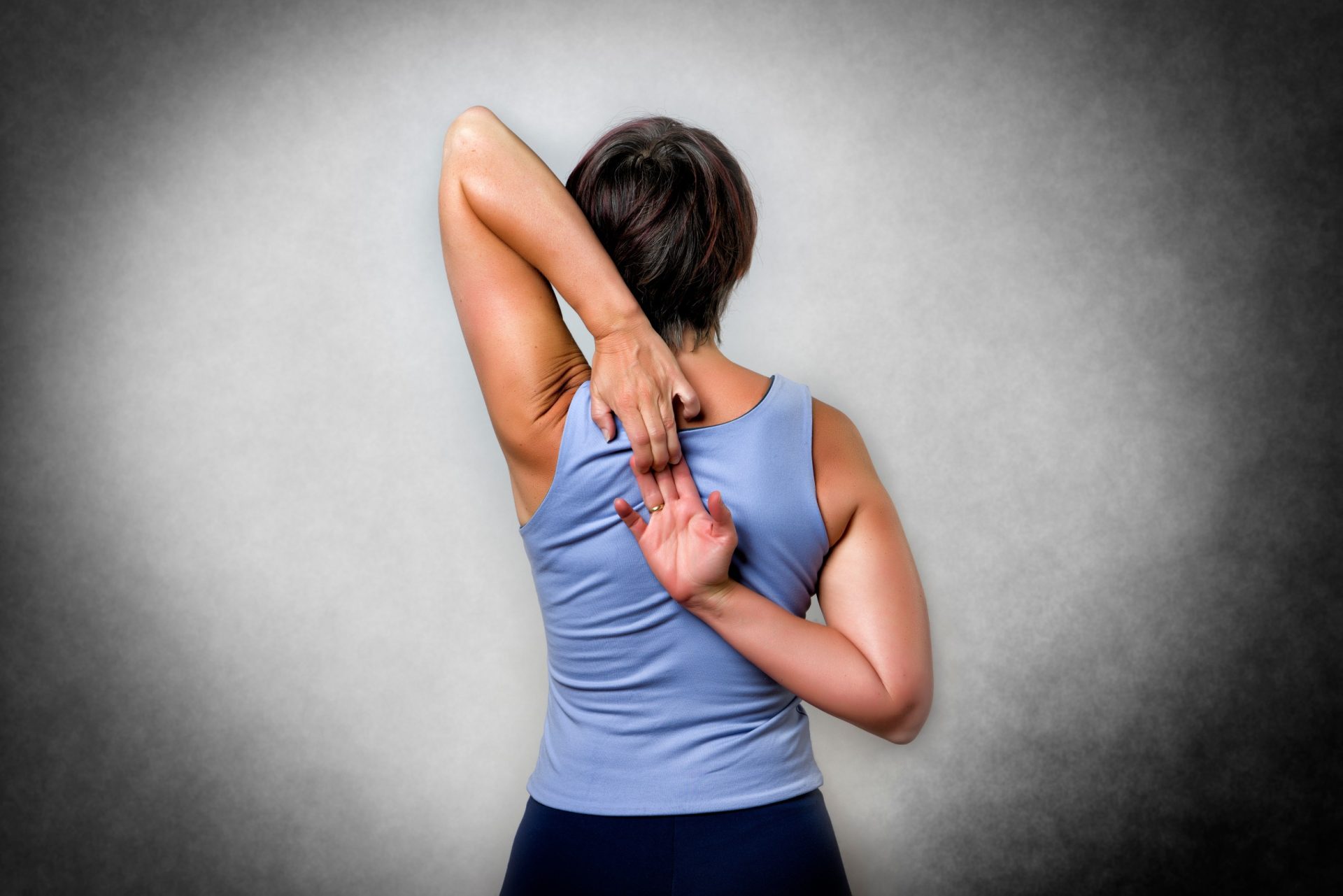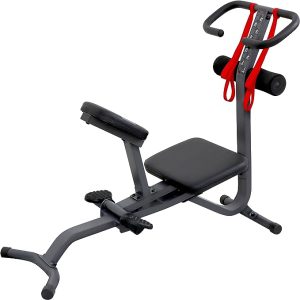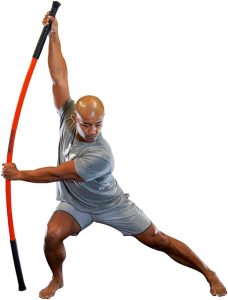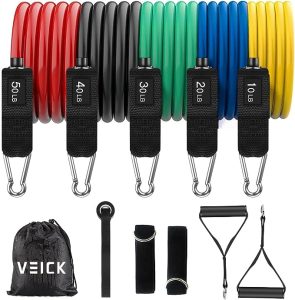In the world of fitness and well-being, shoulder flexibility often takes a backseat to more visible goals like muscle building or weight loss. However, maintaining flexibility, especially in muscles like the pectoralis minor, is crucial for a healthy, functional upper body. Shoulder injuries are very common and take a long time to heal, so it’s best to avoid them if possible, and that’s where pectoralis minor stretching exercises can play a key role.
The pectoralis minor, a small muscle located beneath the pectoralis major, plays a significant role in shoulder movement and posture.
This article delves into the best stretching exercises specifically designed to target the pectoralis minor, enhancing shoulder flexibility and overall mobility.
Pectoralis Minor Stretching – Why It’s So Important
The pectoralis minor, a relatively small muscle located under the pectoralis major, plays a pivotal role in the functionality and health of your upper body.
Stretching this muscle is crucial for several reasons, which often go overlooked in regular fitness routines:
- Prevents Muscle Imbalance and Postural Issues: In our modern lifestyle, characterized by prolonged sitting and computer use, the pectoralis minor tends to become tight and shortened.
This can lead to a forward-rounded posture, commonly known as a ‘forward shoulder slump’. Regular stretching helps counteract this imbalance, promoting better posture and alignment.
- Enhances Shoulder Mobility: A tight pectoralis minor can significantly restrict shoulder movement, affecting a range of motions essential for daily activities and various sports. Stretching this muscle improves shoulder flexibility and functional range of motion.
- Reduces Risk of Pain and Injury: Tightness in the pectoralis minor can contribute to discomfort and pain in the shoulder and neck area. It’s also associated with conditions like thoracic outlet syndrome. Regular stretching reduces these risks by maintaining muscle elasticity.
- Improves Breathing: The pectoralis minor plays a role in the lifting of the ribcage during deep breathing. When this muscle is tight, it can restrict respiratory movement, potentially leading to shallow breathing. Stretching it can aid in deeper, more efficient breathing patterns.
How to Get a Great Pec Minor Stretch
Achieving an effective stretch in the pectoralis minor can significantly improve your upper body flexibility and function.
Here are some specific exercises designed to target this crucial muscle:
1. Forward Lean Dip
- How to Do It: Position yourself on parallel dip bars or the edge of a sturdy bench. Keep your arms straight, supporting your body weight. Lean forward slightly, allowing your shoulders to rise towards your ears. You should feel a stretch in the front of your shoulders and chest.
- Technique Tips: Keep your movements slow and controlled. Adjust the degree of your lean to vary the intensity of the stretch.
- Benefits: This exercise stretches the pectoralis minor effectively and also engages the surrounding chest and shoulder muscles.
- Frequency: Hold the stretch for 20-30 seconds and repeat 2-3 times, depending on your comfort level.
2. Foam Roller Stretch
- How to Do It: Lie down on a foam roller placed vertically along your spine, with your knees bent and feet flat on the floor. Allow your arms to fall open to the sides with palms facing up, stretching the chest and front shoulder area.
- Technique Tips: Ensure the foam roller supports your entire spine, including your head. Breathe deeply to enhance the stretch.
- Benefits: This passive stretch gently opens up the chest and shoulders, providing an excellent stretch to the pectoralis minor and aiding in the release of tension throughout the upper body.
- Frequency: Stay in this position for 1-2 minutes, allowing your muscles to relax and stretch gradually.
3. Fascial Glide with Arm Lift
- How to Do It: Stand upright and place a hand against a wall at shoulder height, fingers pointing up. Gently glide your body forward and back, allowing your shoulder and arm to move smoothly against the wall.
- Technique Tips: Keep your movements gentle and focus on the stretching sensation in the chest and shoulder area.
- Benefits: This exercise promotes fascial mobility and stretches the pectoralis minor.
- Frequency: Perform the glide for 30-60 seconds on each side.
4. Four Point Kneel
- How to Do It: Get on your hands and knees. Reach one arm under your body towards the opposite side, allowing your shoulder to dip towards the floor. You should feel a stretch in your shoulder and upper chest area.
- Technique Tips: Keep your back straight and hips stable during the stretch.
- Benefits: This stretch targets the pectoralis minor and also helps in releasing tension in the upper back and shoulders.
- Frequency: Hold the stretch for 20-30 seconds on each side, repeating 2-3 times.
5. Pec Stretch on Floor
- How to Do It: Lie on your back on the floor. Extend your arms out to the sides with elbows bent at a 90-degree angle (like a goalpost). Gently allow your arms and shoulders to sink towards the floor.
- Technique Tips: Keep your lower back in a comfortable position; don’t arch it excessively.
- Benefits: This stretch passively opens up the chest and front of the shoulders, effectively stretching the pectoralis minor.
- Frequency: Hold for 1-2 minutes, allowing a gradual deepening of the stretch.
6. Supine Stretch
- How to Do It: Lie on your back with knees bent and feet flat on the floor. Place your arms in a ‘W’ position with elbows at shoulder level and palms facing up. Slowly move your arms up and down in a small range, maintaining contact with the floor.
- Technique Tips: Ensure that your arms and shoulders remain relaxed throughout the movement.
- Benefits: This exercise gently stretches the pectoralis minor and helps in relieving tension in the chest area.
- Frequency: Perform for 1-2 minutes, focusing on smooth and controlled movements.
7. Door Stretch
- How to Do It: Stand in a doorway and place your forearms against the door frame, elbows at about shoulder height. Lean forward until you feel a stretch in your chest and shoulders.
- Technique Tips: Adjust the position of your arms to target different areas of the chest and shoulders.
- Benefits: The door stretch is highly effective for stretching the pectoralis minor and can be easily adjusted for intensity.
- Frequency: Hold the stretch for 20-30 seconds, repeating 2-3 times on each side.
Incorporating these varied stretching exercises into your daily routine can significantly enhance the flexibility of your pectoralis minor.
Regular practice can lead to improved posture, reduced shoulder tension, and enhanced upper-body mobility.
Top 3 Pieces of Equipment to Help With Pec Minor Stretches
1. Sunny Health & Fitness Full Body Stretching Machine
2. Stick Mobility Training Stick
3. VEICK Resistance Bands Set With Handles
Is Getting a Pec Major Stretch Important Too?
Stretching both the pectoralis major and minor is essential for maintaining a well-balanced upper body. The pectoralis major, being the larger chest muscle, often tightens due to poor postural habits and repetitive activities, leading to a rounded shoulder posture.
Regular stretching of this muscle is crucial for ensuring balanced muscle development, preventing injuries, and enhancing the range of motion in the shoulders. It’s particularly beneficial for athletes and individuals engaged in activities that require extensive arm movements.
Additionally, maintaining flexibility in the pectoralis major is vital for achieving proper postural alignment, which in turn can improve breathing efficiency and reduce the likelihood of back and neck strain.
Therefore, incorporating stretches for both the pectoralis major and minor into your fitness routine is a key aspect of comprehensive upper body care, promoting overall health, improved posture, and functional strength.
Stretching Your Pec Minor to Prevent Injuries
Incorporating regular stretching of the pectoralis minor into your fitness routine is not just about improving flexibility and posture; it’s also a crucial preventative measure against various injuries.
Here’s why focusing on the pectoralis minor is essential for injury prevention:
- Reduces Muscle Tension: The pectoralis minor can become tense and shortened due to repetitive activities, poor posture, and lack of movement. This tension increases the risk of muscle strains and tears. Regular stretching helps alleviate this tension, keeping the muscle long and supple.
- Improves Shoulder Joint Stability: The pectoralis minor plays a key role in stabilizing the shoulder joint. A well-stretched muscle ensures proper joint alignment and function, which is vital in preventing shoulder injuries, particularly for athletes and individuals engaged in upper body-intensive activities.
- Prevents Posture-Related Injuries: Tightness in the pectoralis minor contributes to a forward-rounded posture, leading to compensatory strain in other areas of the body, such as the neck and upper back. Stretching this muscle helps correct postural imbalances, thereby reducing the risk of related injuries.
- Enhances Overall Upper Body Mobility: Flexible pectoralis minor muscles allow for a greater range of motion, reducing the likelihood of injuries caused by sudden, unaccustomed movements. This enhanced mobility is beneficial not only in athletic endeavors but also in daily life activities.
- Aids in Recovery: For those recovering from upper body injuries, the gentle stretching of the pectoralis minor can be an important part of the rehabilitation process, aiding in restoring muscle function and reducing recovery time.
Regular stretching of the pectoralis minor is a proactive approach to injury prevention. It contributes to maintaining healthy muscle function, proper joint stability, and overall upper-body mobility.
Benefits of Stretching Your Pec Minor Before and After You Workout
Stretching the pectoralis minor both before and after workouts can bring a lot of benefits, enhancing your exercise experience and contributing to your overall fitness and health.
Here’s how incorporating these stretches at different stages of your workout routine can be advantageous:
Before Workouts – Preparing the Muscle
- Increases Blood Flow: Stretching your pectoralis minor before exercising increases blood flow to the muscle, preparing it for the upcoming physical activity.
- Improves Flexibility: Pre-workout stretching can improve the flexibility of the pectoralis minor, allowing for a better range of motion during exercises, particularly in upper-body workouts.
- Reduces Risk of Injury: Properly stretched muscles are less prone to strains and tears. By stretching your pec minor before a workout, you can reduce the risk of muscle-related injuries.
- Enhances Performance: When your pectoralis minor is flexible, it can improve your overall performance in exercises that involve the chest and shoulders, such as push-ups, bench presses, and swimming strokes.
After Workouts – Aiding Recovery
- Relieves Muscle Tension: Post-workout stretching helps to relax and lengthen the pectoralis minor, which can become tight after exercise.
- Promotes Recovery: Stretching after a workout can facilitate muscle recovery, reducing soreness and stiffness.
- Improves Posture: Regularly stretching the pectoralis minor post-exercise can counteract any tightness caused by the workout, aiding in maintaining good posture.
- Encourages Relaxation: Post-workout stretching can be a calming experience, signaling to your body that the workout is complete, and aiding in overall relaxation and stress reduction.
Pec Minor Release
Releasing the pectoralis minor is an essential aspect of maintaining upper body health, particularly for those who experience tightness and discomfort in the chest and shoulder area.
Pec minor release techniques are designed to alleviate tension in this muscle, enhancing flexibility and reducing the risk of pain and injury.
Here are some effective methods for pectoralis minor release:
1. Self-Myofascial Release with a Massage Ball
- How to Do It: Use a massage ball or a similar tool. Place the ball against a wall and lean the front part of your shoulder against it, targeting the area where the pectoralis minor is located.
- Technique: Apply gentle pressure and perform small circular movements or back-and-forth motions. Spend extra time on areas that feel particularly tight.
- Benefits: This technique helps in breaking up muscle knots and tension, promoting better muscle elasticity and function.
2. Manual Release Techniques
- Seek Professional Help: A physical therapist or a massage therapist can perform manual release techniques on the pectoralis minor. These may involve specific massage and manipulation techniques.
- Benefits: Professional intervention can provide a more thorough and effective release, especially for those with significant tightness or chronic discomfort.
3. Stretching for Release
- Regular Stretching: Incorporating the previously mentioned pectoralis minor stretches into your daily routine can gradually release and lengthen the muscle.
- Consistent Practice: Regular stretching is key for long-term benefits, helping to maintain muscle flexibility and prevent the recurrence of tightness.
4. Heat Therapy
- Application: Applying a warm compress or using a heating pad over the chest area can help relax the pectoralis minor.
- Benefits: Heat therapy can increase blood flow and muscle elasticity, aiding in the release process.
Importance of Posture Correction
- Mindfulness in Daily Activities: Paying attention to your posture, especially during prolonged sitting or standing, can help reduce undue strain on the pectoralis minor.
- Postural Exercises: Engaging in exercises that strengthen the upper back and shoulder blades can support better posture, indirectly aiding in the release of the pectoralis minor.
Performing regular pectoralis minor release techniques can have a profound impact on your upper body health, improving posture, reducing discomfort, and enhancing overall shoulder function.
Incorporating Pectoralis Minor Stretching Exercises in Your Workout Routine
Effectively integrating pectoralis minor stretching exercises into your workout routine can maximize the benefits of your fitness endeavors. Here’s how to seamlessly include these stretches and ensure your pec minor gets the attention it deserves:
1. Warm-Up Incorporation
- Before Strength Training: Incorporate light pectoralis minor stretches during your warm-up to prepare the muscles for more intense activities. Gentle stretches help increase blood flow and flexibility, reducing the risk of strain during your workout.
- Dynamic Movements: Opt for dynamic stretches or mild fascial release techniques as part of the warm-up to keep the muscles engaged and ready for action.
2. Post-Workout Cool Down
- After Strength Training: Post-workout is an ideal time for deeper pec minor stretches. The muscles are warm and more pliable, allowing for more effective stretching.
- Longer Holds: Hold each stretch for a longer duration post-workout, as this can aid in muscle recovery and prevent post-exercise stiffness.
3. Rest Days Inclusion
- Active Recovery: On rest or active recovery days, focus on a series of pec minor stretches to enhance flexibility and aid in muscle recovery.
- Combination with Other Activities: Pair stretching with other light activities such as yoga or walking, to maintain overall body mobility and circulation.
4. Creating a Routine
- Daily Stretching: Aim to incorporate pec minor stretches daily, especially if you have a sedentary lifestyle or engage in activities that promote chest tightness.
- Consistency is Key: Regular stretching is more beneficial than sporadic efforts, as it contributes to long-term flexibility and muscle health.
5. Listening to Your Body
- Adjust Intensity: Pay attention to your body’s signals. Stretch to the point of tension, not pain. If a stretch feels too intense, ease up to find a comfortable position.
- Mindful Breathing: Utilize deep, controlled breathing during your stretches. This can help deepen the stretch and promote relaxation and muscle release.
By thoughtfully incorporating pectoralis minor stretches into various phases of your workout and daily life, you can significantly enhance shoulder flexibility, improve posture, and reduce the likelihood of muscle imbalances and related injuries.
Regular and consistent stretching not only complements your fitness routine but also contributes to overall body wellness and functionality.
Zoppler is reader supported and may earn affiliate commissions from links on this page. We support and believe in all the products and services we promote and are affiliated with.














